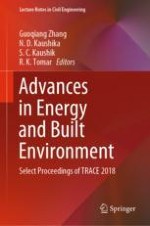2020 | OriginalPaper | Chapter
Evaluation of Natural Ventilation Potential for Indoor Thermal Comfort in a Low-Rise Building in Arid and Semi-arid Climates of India
Authors : K. N. Patil, S. C. Kaushik, Ayush Aggarwal
Published in: Advances in Energy and Built Environment
Publisher: Springer Singapore
Activate our intelligent search to find suitable subject content or patents.
Select sections of text to find matching patents with Artificial Intelligence. powered by
Select sections of text to find additional relevant content using AI-assisted search. powered by
